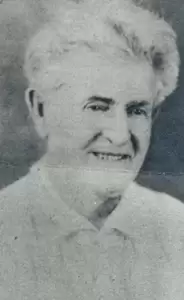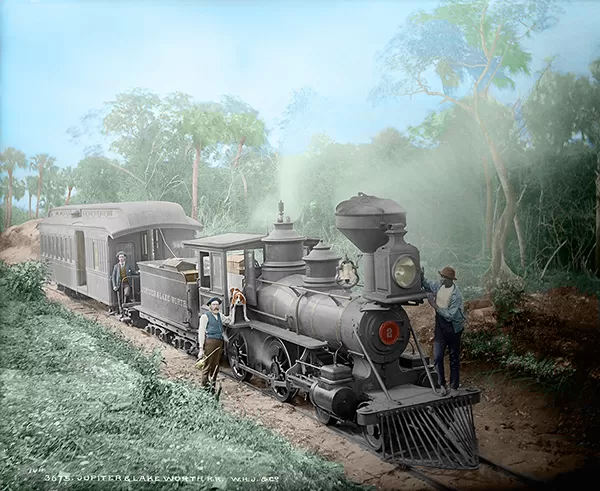Getting Around
With today’s complex network of roads and railroads in Palm Beach County, it’s hard to imagine that neither existed a little over a century ago. The only way to get around was by water or on foot. Carving transportation arteries out of thick jungle and mucky wetlands took time—and a great deal of innovation.
The pioneers used natural waterways—the ocean, lakes, rivers, and swamps—to travel from place to place, to ship out locally grown agricultural goods, and to bring in supplies; the nearest store was in Titusville, 150 miles away. Commercial trade boats could come only as far south as Jupiter, until construction of the East Coast Canal (Intracoastal Waterway) cut through a ridge to reach Lake Worth about 1900.
The first transportation service for the lake community was provided in 1879 by Captain Uriah Dunning “U. D.” Hendrickson, who settled just north of the present Palm Beach Country Club. Hendrickson’s first boat, a 40-foot, 8-ton sharpie sailboat Illinois, was thought to be the largest then seen on Lake Worth, according to Charlie Pierce of Hypoluxo. From his long dock, Hendrickson’s boats made regular supply trips along Florida’s east coast from where the railroad ended in Jacksonville, sometimes as far south as Key West. Hendrickson also ran a general store from his property.
To avoid going “outside,” into the perilous ocean, some of the settlers built a tram railway across the haulover from Lake Worth Creek to Lake Worth in 1878, using drift lumber found on the beach. In 1884 Elisha Newton “Cap” Dimick and the Brelsford brothers, Edmund and John, added a mule-driven “hack line,” or stage coach, to carry passengers and cargo to the head of Lake Worth from the Jupiter dock, on the south side of Jupiter Inlet, then called Stone’s Point, where Dubois Park is now. The last leg of the journey, by boat, ended at various points on Lake Worth.
Hendrickson’s other vessels included the 90-foot schooner Emily B. One of his schooners was wrecked on a sand bar in the St. Johns River with a load of freight. After hanging all day from the rigging, U. D. Hendrickson was saved by an old friend. His wife, Etta, refused to let him get another boat.




